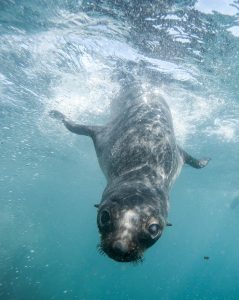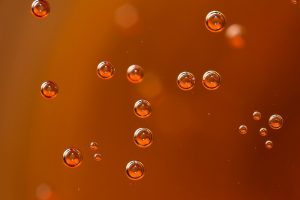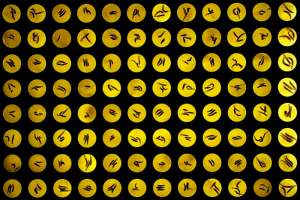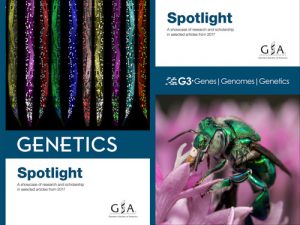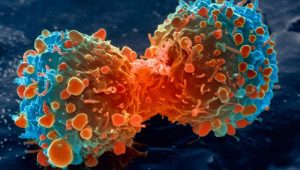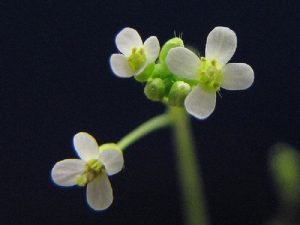Enter your address to receive notifications about new posts to your email.
Articles tagged G3 Journal
(174 results)
-
A look into how fur seals rebounded after overhunting
A new genome assembly for Antarctic fur seals sheds light on their historic comeback after 19th century hunting. In the late 19th century, the Antarctic fur seal was thought to be effectively extinct. After over a century of overexploitation driven by demand for the seal’s prized pelt, populations at known breeding grounds seemed to have…
-
Drosophila development in the drink
A fruit fly model of fetal alcohol spectrum disorder reveals a Cyclin E-centric network modifies developmental sensitivity. Alcohol exposure in utero can lead to a wide range of developmental problems, even causing fetal death in some cases. But since this exposure doesn’t always have the same outcome, is it more likely to be a problem…
-
A new tool for longevity and mating studies in C. elegans
By borrowing a system found in plants, researchers can turn off sperm production in an inducible, reversible, and non-toxic manner Let’s say you want to study how your favorite gene affects aging. You pick Caenorhabditis elegans for your study because it is one of the most important models of aging, and you put some of…
-
Antibiotic resistance beyond the hospital
A strain of Staphylococcus epidermidis isolated from a hotel room may provide insight into how resistance develops outside of medical settings. Although intense research and media interest has focused on drug-resistant bacteria in hospital settings, resistance can and does evolve outside the clinic. Methicillin-resistant Staphylococcus epidermidis is often isolated from infections of medical devices, but…
-
Using fruit flies to find rare disease treatments
An automated drug screening approach gives insight into rare NGLY1 deficiency. Sometimes, diagnosing and treating an illness is straightforward. Other times, the diagnosis is challenging while the treatment is simple—or vice versa. In the case of a rare disease like NGLY1 Deficiency, both diagnosis and treatment can feel unreachable. The complex challenges of rare diseases…
-
Remapping lab rats
For the first time in nearly 15 years, the rat genetic map has been updated. Genetic maps help us navigate uncharted data, but to successfully use them to link genes to complex traits, their resolution must be high enough to yield a manageable list of candidate variants. That’s why genetic maps for mice and humans…
-
An updated tool for finding the footprints of selection
diploS/HIC uses machine learning to identify selective sweeps in unphased data. A set of footprints can tell us a lot about the creature that left them—without requiring us to see the creature itself. Footprints can suggest the animal’s size, weight, and stride, and from there, we can extrapolate even more information. Much like soft sand…
-
GSA Journals Spotlight 2017
The GSA Journals, GENETICS and G3: Genes|Genomes|Genetics, are proud to present our annual Spotlight booklets for research published in 2017. Each Spotlight is a showcase of the excellent research and scholarship published over the course of the year, along with a selection of striking images submitted by our authors. Browse the 2017 GENETICS Spotlight. Browse the 2017 G3 Spotlight.
-
How similar are fruit fly and human cancers?
New evidence for genome instability in fly tumors suggests key similarities—and differences—from human disease processes. Human cancers display a variety of abnormal genomic features, including increased numbers of single nucleotide variants (SNVs) and copy number variants (CNVs). However, a 2014 study on a fruit fly tumor detected no elevation of SNVs or CNVs compared to non-tumor…
-
Which is more powerful: genetic or epigenetic variation?
Although epigenetic modifications contribute to trait variability, their effect pales in comparison to standing genetic variation. The raw material of evolution is genetic variation, but proponents of the “extended evolutionary synthesis” add a new layer to this model: heritable variation in epigenetics. The packaging and tagging of DNA can alter traits without changing the DNA…
-
A splice in timeless
Photosensitive alternative splicing of a malt fly circadian clock gene varies between northern and southern populations. Over the course of a day, most organisms undergo profound changes. Over the course of a season, the changes can be even more dramatic. For example, insects’ responses to the brisk nights and cooler days of fall and winter…


